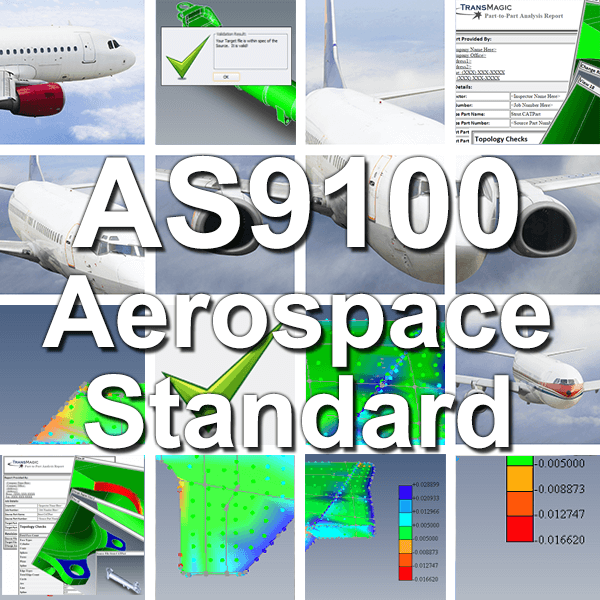 Aerospace Standard AS9100 is a standard for quality management systems (QMS) for the aerospace sector. This standard is based on ISO 9001, but with additional aerospace-specific requirements added; it is a global standard, and is published by different countries separately. The AS9100 standard was first released in October 1999 by the Society of Automotive Engineers and the European Association of Aerospace Industries, but it continues to evolve; AS9100-C was released in 2009, and AS9100-D was released in September of this year (2016).
Aerospace Standard AS9100 is a standard for quality management systems (QMS) for the aerospace sector. This standard is based on ISO 9001, but with additional aerospace-specific requirements added; it is a global standard, and is published by different countries separately. The AS9100 standard was first released in October 1999 by the Society of Automotive Engineers and the European Association of Aerospace Industries, but it continues to evolve; AS9100-C was released in 2009, and AS9100-D was released in September of this year (2016).
AS9100 is Concerned with Processes
How do the all the processes in the company interact and integrate?
Organizations keeping this standard are tasked with stating what they will do to manage quality throughout the organization, documenting that they did what they said they would do, generating records, and finally using the insights gained in these processes to improve quality standards. In short, aerospace standard AS9100 is a way of organizing and optimizing the business, engineering and manufacturing processes that affect the quality of your products and services. Many of the criteria for the AS9100 standard have to do with verification, validation and inspection; TransMagic MagicCheck can help you generate the data and reports you need to fulfill this standard and get the maximum benefit out of the process.
Benefits of AS9100
As with other standards, AS9100 can be challenging to implement, but brings with it many benefits; Mcedd.org reports that UK companies implementing this standard experienced:
- 20% increases in on-time delivery
- Greater operational efficiency
- Increased profitability
AS9100 criteria answerable by MagicCheck Analysis
- Section 7.1 – Quality objectives for product, verification, validation, monitoring, measurement, inspection and test activities needed
- Section 7.3.4 – Review, checking documented design output against design requirement input at each stage
- Section 7.3.5 – Verification that design will meet requirements
- Section 7.3.6 – Validation that product will meet requirements
- Section 7.3.7 – Change control to ensure changes are identified, evaluated, controlled and recorded
- Section 7.4.2 – Purchasing specifications including data, inspections, tests and test specimens
- Section 7.5.1 – Control of production, including inspections and tests
MagicCheck Validation
TransMagic MagicCheck has the ability to check part-to-part and point-to-part so that the revision process can be verified, manufacturing can be protected from missed data, and variations between authority models and derived models, or scanned data, can be quantified, reported and used to improve product and process quality.
- Validate that the authority model and the derived model are within a tolerance.
- Perform a point-to-part comparison of CMM point data to the master CAD model to quantify manufacturing issues.
- Compare CAD revisions to be sure of what changed, where it changed, and how much it changed. No surprises!
- Automatically generate reports for validation, point-to-part comparison or CAD revision checking.
- Generate 3D PDF files of validation, comparison and inspection documents that are viewable (with color heat-map comparison results) without the need for a CAD package or viewer.
Below, see video highlights of TransMagic MagicCheck Revision Analysis, Validation Analysis and Point-to-Part Analysis.
For more information on this standard, reference http://www.mcedd.org/documents/IMCP/Ebook%20on%20How%20to%20Implement%20an%20AS9100.pdf
You may also be interested in our article on Boeing’s D6-51991 Spec.
MagicCheck Validation Eval
If you do not currently have access to MagicCheck for Validation Analysis, MagicCheck is included in TransMagic’s free eval-To try the TransMagic Eval, CLICK HERE.
Also feel free to discuss your needs with one of our account reps.
If you have questions on comments on this article, please contact us at social@transmagic.com.
